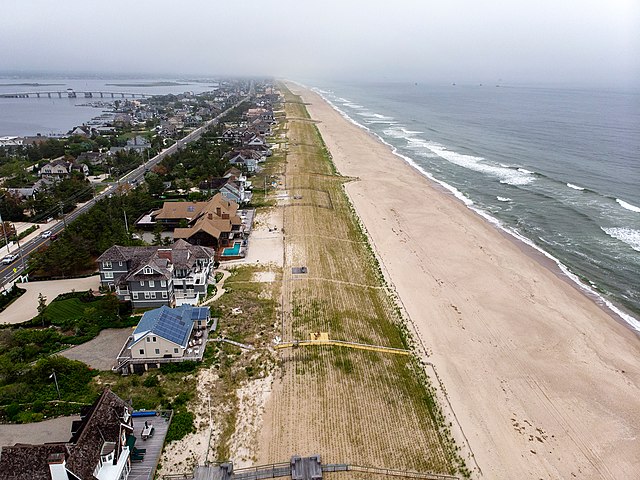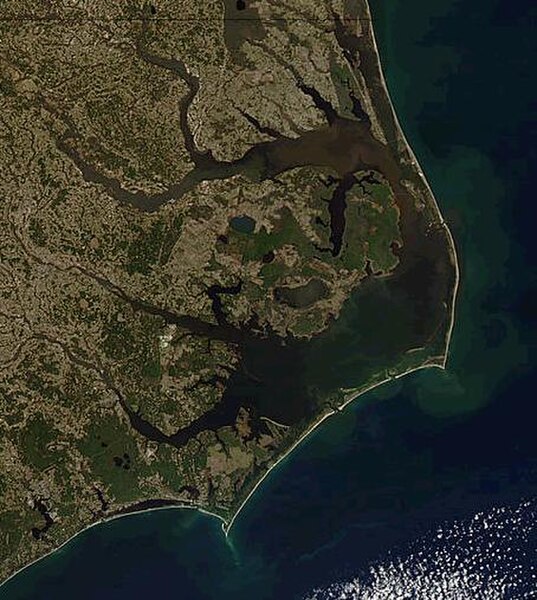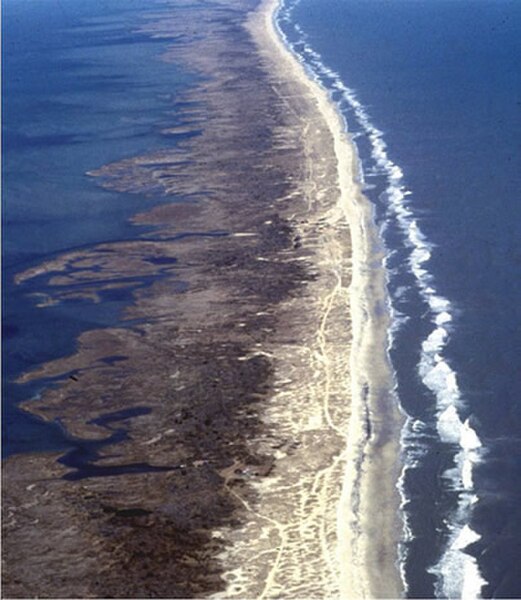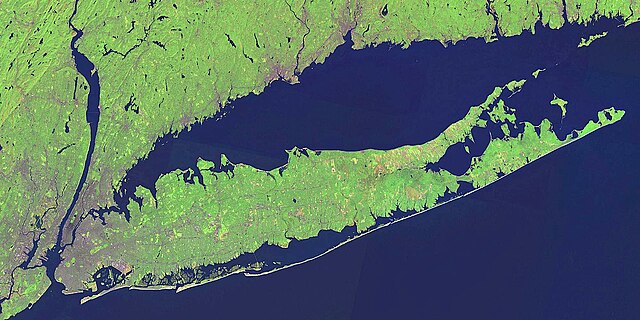The Outer Banks are a 200 mi (320 km) string of barrier islands and spits off the coast of North Carolina and southeastern Virginia, on the east coast of the United States. They line most of the North Carolina coastline, separating Currituck Sound, Albemarle Sound, and Pamlico Sound from the Atlantic Ocean. A major tourist destination, the Outer Banks are known for their wide expanse of open beachfront and the Cape Hatteras National Seashore. The seashore and surrounding ecosystem are important biodiversity zones, including beach grasses and shrubland that help maintain the form of the land.
The Outer Banks, separating the Atlantic Ocean (east) from Currituck and Albemarle Sounds (north) and Pamlico Sound (south)
View from the International Space Station in 2019 (north is in the lower left of the photo)
Aerial view of Outer banks (looking north), with sound on the left and ocean on the right
Graveyard of the Atlantic Museum, Hatteras, North Carolina, June 2007
Barrier islands are a coastal landform, a type of dune system and sand island, where an area of sand has been formed by wave and tidal action parallel to the mainland coast. They usually occur in chains, consisting of anything from a few islands to more than a dozen. They are subject to change during storms and other action, but absorb energy and protect the coastlines and create areas of protected waters where wetlands may flourish. A barrier chain may extend for hundreds of kilometers, with islands periodically separated by tidal inlets. The largest barrier island in the world is Padre Island of Texas, United States, at 113 miles (182 km) long. Sometimes an important inlet may close permanently, transforming an island into a peninsula, thus creating a barrier peninsula, often including a beach, barrier beach.
Though many are long and narrow, the length and width of barriers and overall morphology of barrier coasts are related to parameters including tidal range, wave energy, sediment supply, sea-level trends, and basement controls. The amount of vegetation on the barrier has a large impact on the height and evolution of the island.

Mantoloking, New Jersey rests on the barrier island of Barnegat Bay. Note how the barrier island shields the inland Barnegat Bay (left) from the more powerful wave action of the open Atlantic Ocean (right).
Outer barrier in Long Island
The Mississippi–Alabama barrier islands guarding Mobile Bay and the Mississippi Sound







